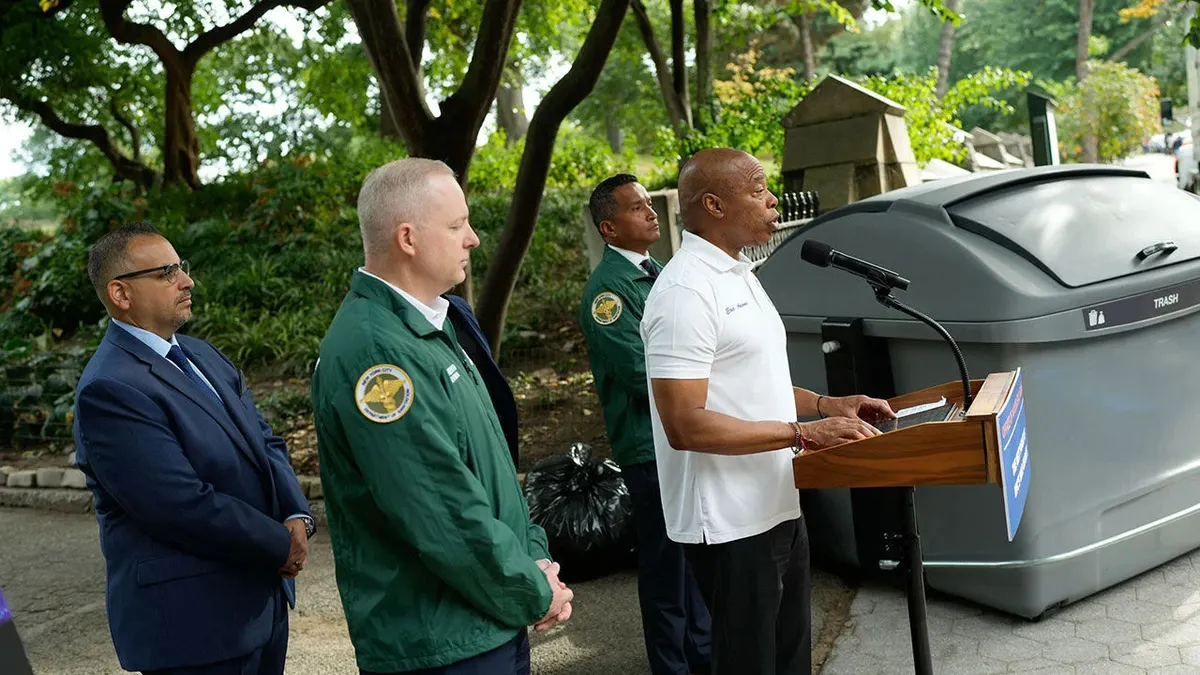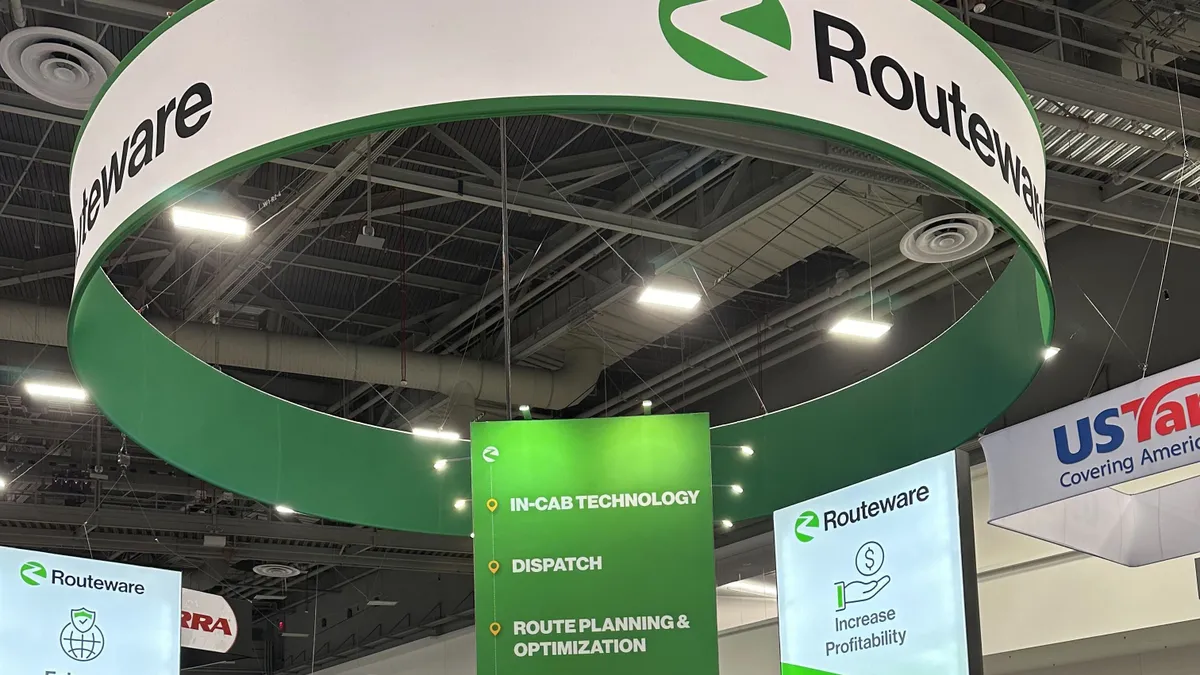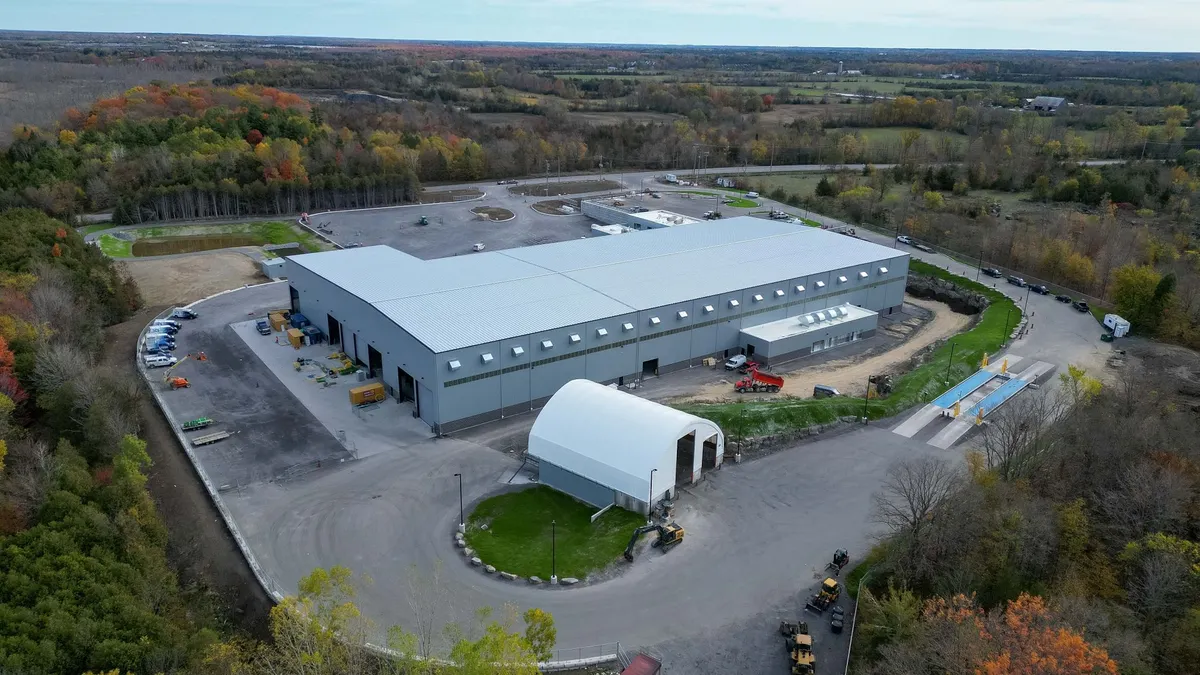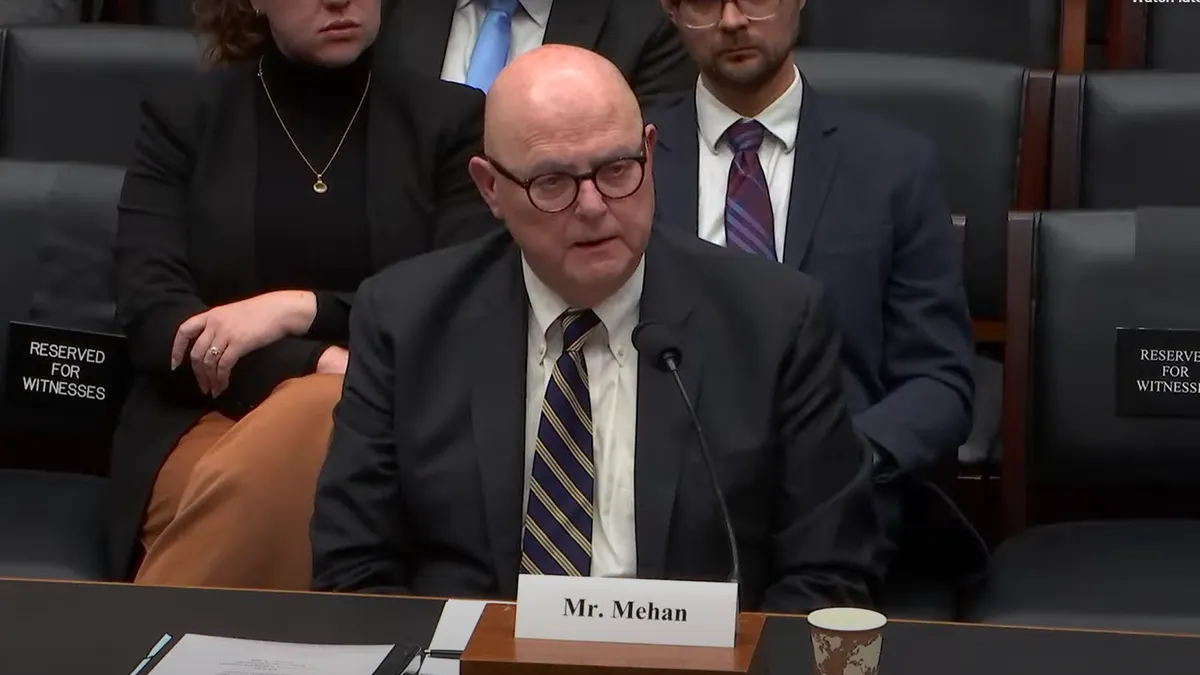Federal lawmakers have reintroduced the Break Free From Plastic Pollution Act, a sweeping recycling bill that kickstarted a major debate over how to reduce the country's plastic use when it debuted last year.
The bill retains many of its provisions from last year, including a nationwide extended producer responsibility (EPR) program for packaging, minimum recycled content mandates for certain products, a national container deposit system and single-use plastic product bans. It also calls for a three-year pause on issuing permits for new plastics production facilities and chemical recycling plants, a controversial measure that has drawn criticism from the plastics industry.
The new version of the bill also features updates such as more source reduction efforts, including a focus on refillable and returnable containers. Additional, it calls for further environmental justice measures such as making public hearings available in languages fenceline communities speak.
Sponsored by Rep. Alan Lowenthal, D-Calif., and Sen. Jeff Merkley, D-Ore., the bill is backed by more than 400 environmental advocacy groups. They say sweeping changes are needed to reduce plastic production at its source, improve recycling, reduce greenhouse gas emissions and protect disproportionately affected communities. The bill is co-sponsored by dozens of Democrats, but so far no Republicans have signed on.
“Plastic waste is a crisis that's not simply a solid waste issue, but it's intimately tied to climate change, to environmental justice and to international human rights,” Lowenthal said during a Wednesday press call.
Though the bill came up against major opposition last year, mainly for its EPR provisions, Merkley and Lowenthal said it may have a better chance of passing this year because of growing support from legislators and environmental groups. Major provisions in Break Free are also mirrored in other new federal legislation, such as the CLEAN Future Act, which emphasizes the need for a national EPR program and minimum recycled content requirements. Some of these provisions have also been proposed or enacted at the state level.
“There is nothing new in the bill that is new or radical, it just simply incorporates the best practices (and) common sense policies, many that are being implemented in other countries, or at the state and local level in this country,” Lowenthal said.
Industry response
Trade groups such as the National Waste & Recycling Association have criticized portions of the bill. In a statement, NWRA's general counsel Jim Riley said Break Free's bottle bill provisions are an "economic and disruptive burden to both recycling markets and taxpayers while doing nothing to generate markets for recyclables."
David Biderman, CEO of the Solid Waste Association of North America, said the association is still reviewing the bill. "SWANA supports the bill’s overall goals of reducing waste and improving recycling in the United States, but the devil is in the details, and we will be reviewing the legislative language and engaging with the bill sponsors and other stakeholders in the weeks ahead."
Several plastics industry groups oppose the bill, including the American Chemistry Council (ACC). Joshua Baca, vice president of ACC's plastics division, said this week the bill is a “misguided and harmful piece of legislation” that restricts innovation and would impact jobs.
Joined by plastic producers and chemical recycling companies on a Tuesday press call, Baca said the industry supports a “shared responsibility model” that would impose fees on packaging in order to help pay for recycling infrastructure or education. It will push back against many other components of the Break Free bill.
“Plastic in the environment is never acceptable, but after a careful analysis of the legislation we have concluded it won’t end plastic waste but rather end the American plastics industry by restricting the production of modern and innovative plastic materials,” he said.
Much of the plastics industry's criticism is around the bill's calls for a temporary freeze on permitting for new plastics production facilities so the federal government can investigate their health and environmental impacts. This includes any “industrial facility that transforms natural gas liquids into ethylene and propylene for later conversion into plastic polymers,” according to the bill. It also encompasses plastic polymer production facilities and facilities that repolymerize plastic for use as new products or fuel in a process known as chemical or advanced recycling.
Bill sponsors say more research is needed determine the impact on greenhouse gas emissions and pollution from these facilities, especially in communities where they might exist alongside disadvantaged neighborhoods. Research will be able to help update air and water regulations and make sure any future facilities can comply, Lowenthal said.
The ACC promotes chemical recycling technologies and says the three-year pause would needlessly eliminate an important recycling technique and make the United States less competitive in the plastic recycling marketplace.
Chemical recycling is “the most effective tool at our disposal to capture more plastic waste and revolutionize how we use and reuse our plastic materials,” Baca said on Tuesday.
Bob Powell, CEO of chemical recycling company Brightmark, said a planned facility in Ashley, Indiana, will create jobs and help solve the plastic waste problem. “We don’t believe it is a mutually exclusive choice between either plastics or the environment,” he said.
ACC has said it is looking forward to working with Congress on recycling-related legislation, a hint that a bill more friendly to chemical recycling could be forthcoming.
Evolving plans
The Break Free bill is one of the most wide-ranging of its kind in Congress right now, in part because of the expanded environmental justice requirements in the permitting process for plastics facilities.
Facilities would need to include an assessment listing efforts to mitigate potential environmental impacts on surrounding communities, and deliver that to “applicable frontline communities” through methods such as public hearings and printed notices held or published in languages the community members speak. Facilities would need to give the community at least 60 days notice, according to the bill.
This year’s version also has a “stronger source reduction aspect," meant to introduce additional ways to reduce plastic production, said Yinka Bode-George, environmental health manager for the National Caucus of Environmental Legislators.
The bill calls for a grant program to support packaging reuse and reduction efforts, including the expansion of reuse and refill programs for items such as household cleaners, bulk food products and beverages. It also tasks the U.S. EPA with creating a publicly available feasibility report detailing best practices for reusable and refillable container options for sectors such as retail goods and meal delivery. It also calls for a pilot program to help remove and mitigate microplastics in the environment.
Other source reduction elements include tasking federal agencies to study the effects of derelict fishing gear and microfiber pollution, and requiring mandatory filtration standards for clothes washers in an effort to reduce microplastics.
The Break Free bill also contains other major plastics-related restrictions targeting the "plastics trifecta," said Judith Enck, former EPA regional administrator and president of the nonprofit Beyond Plastics.
Single-use plastic carryout bags would be banned, with fines imposed for establishments that offer them after Jan. 1, 2023, along with expanded polystyrene used for food service products, and consumer coolers and shipping materials such as "those dreadful packaging peanuts," she said. Single-use bottles for personal care items like shampoo and other hotel toiletries and "non-compostable" produce stickers would also be banned, according to the bill.
The bill discourages establishments from offering plastic straws and utensils, but would allow them to be available upon request. This not only helps reduce plastic use, "it saves businesses money," Enck said.
Also returning from last year’s bill is a requirement that packaging producers take responsibility for collecting and recycling materials. They would be encouraged to join producer responsibility organizations (PROs) with makers of like products. PROs would be required to develop their own product stewardship plans by Feb. 1, 2023, to be approved by the EPA every five years.
Those plans would need to meet required performance targets, such as 65% reused or recycled content minimums for all covered products (except paper) by Dec. 31, 2027, and 75% recycling rates for beverage containers and paper by the same time. By 2032, PROs would need to reuse or recycle 90% of paper and beverage containers, and 80% of most other covered products.
The bill also calls for makers of plastic beverage containers to meet a minimum post-consumer recycled (PCR) content threshold that would increase over time. Levels would start at 25% PCR in 2025 and build up to 80% by 2040. It would also introduce a 10-cent refund for all beverage containers, regardless of material. States with similar container deposit systems could maintain them if they meet federal standards.
The EPA would also be directed to create standardized recycling labels for products, with covered products and beverage containers not allowed to include the “chasing arrows” symbol if the product is not easily recyclable. Additionally, the bill calls for a national, standardized labeling system for trash and recycling bins.
The Break Free bill is one of many recycling-related bills introduced or coming soon in Congress. It's unclear how this or other bills will fare this year as lawmakers face a crowded schedule, even as the Biden administration supports environmental and climate change priorities.



















